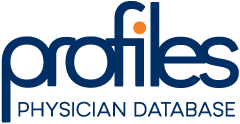The nursing workforce crisis isn’t on the horizon — it’s already here. As demand for care rises, healthcare employers face an urgent challenge: how to recruit, retain, and support nurses amid a shortage with deep structural roots.
Here’s a look at why this is happening, what you can expect, and how to position your organization for success.
.jpg)
1. Nursing Education Bottlenecks Are Blocking Entry
Many qualified applicants are turned away from nursing programs due to a shortage of faculty and clinical placements. In Mississippi, hundreds of nursing school applications are denied annually — not for lack of interest, but for lack of staff. Nationally, nearly 92,000 qualified nursing applicants were turned away in 2021, despite demand (AACN).
What This Means for Recruiters: Long-term nursing shortages are exacerbated by shortfalls in the educational pipeline. Building partnerships with nursing schools and supporting faculty development initiatives can help open the gates.
2. Aging Workforce Is Accelerating Retirements
The average age of an RN is 50, and nearly 1 million nurses are expected to retire by 2030 (U.S. News). Many of these roles have no one in line to fill them — a dangerous gap in experience and patient care continuity.
What This Means for Recruiters: Target mid-career nurses for succession planning. Offer flexible roles, phased retirement, or mentorship opportunities to retain older nurses while attracting the next generation.
3. Burnout From COVID-19 Is Fueling Attrition
Nurses worked longer hours during the pandemic, often with insufficient support. As a result, burnout has surged. According to Medscape, burnout is now a top reason nurses leave the profession — even among those who once felt fulfilled in their roles.
What This Means for Recruiters: Addressing burnout must go beyond benefits. Highlight mental health resources, flexible scheduling, and manageable workloads in your recruitment messaging.
4. Demand Is Outpacing Supply
According to the Bureau of Labor Statistics, the U.S. will need more than 200,000 new registered nurses each year through 2031. Between retirements, burnout, and a limited educational pipeline, this demand far exceeds the current supply.
5. Digital Marketing Can Help Fill the Gap
One of the fastest ways to expand your recruitment reach is through digital marketing for healthcare recruitment. Targeted tools such as geofencing, email campaigns, and social media outreach can help you connect with both active and passive candidates.
If your team lacks the bandwidth or expertise to build a digital strategy, consider outsourcing recruitment marketing to specialists who understand the healthcare landscape.
Click here to learn more about PracticeMatch’s Client Sourcing team and all they have to offer.
Or reach out at information@practicematch.com for more information.
Originally published 3/10/2023. Updated 1/5/2025.
